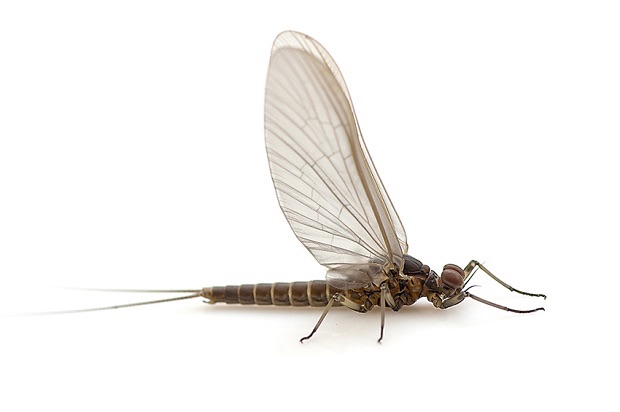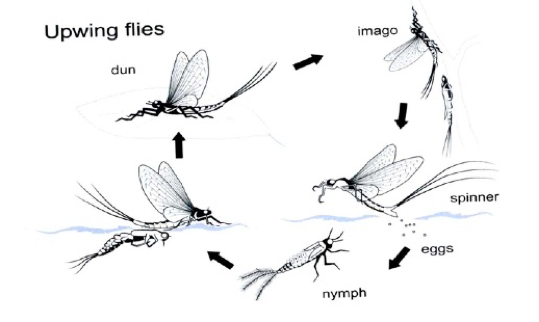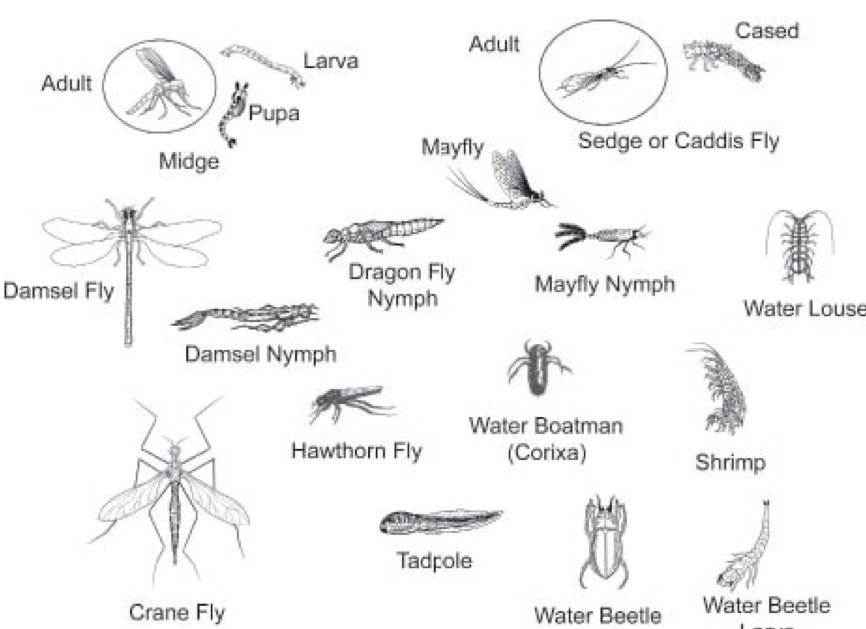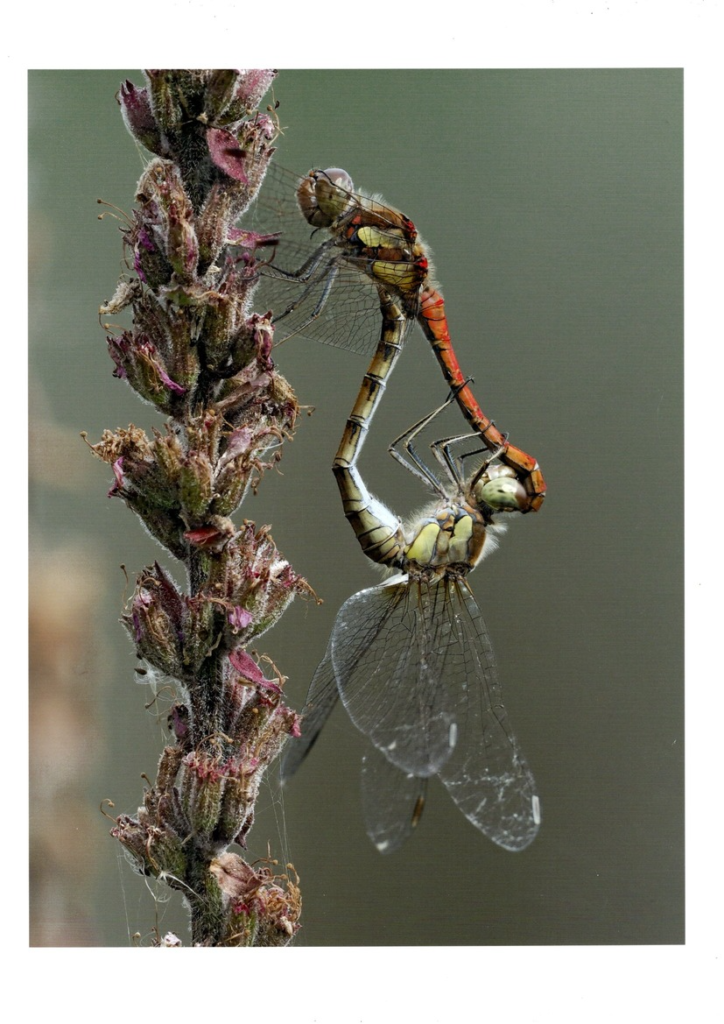
51 species in 8 families.
Life cycle – eggs – larva either 1 year, 2 years for mayflies or with some olives which may have 4/5 generations a year. With up to 50 moults a year.
No pupal stage.
Dun – which is a winged sub adult (wings are not as translucent).
Spinner – final adult stage. Adults have no mouth parts.

The nymphs will live on or near the bottom, some species may hide in weeds and others may cling to rocks or burrow into the river bed. The small nymph develops and moults as it gets progressively larger. The nymph feeds mainly on decaying vegetable matter.
From a fly-tyers point of view it is handy to remember that swimming nymphs have a long abdomen and shorter thorax. So 2/3 abdomen & 1/3 thorax.
Creepers and clingers have abdomens and thoraxes of nearly equal length.
The emergence to the dun or sub-imago stage may be quite rapid with the nymph swimming to the surface and the nymphal case splitting. From this, the fully winged dun emerges and rests on the surface film until the wings are dry and it is able to fly off. The dun stage usually lasts between 12 and 36 hours.
The final stage is the spinner or imago. This is where the skin of the duller dun splits along the top of the thorax and the fully adult fly emerges, transformed into a brighter version with transparent wings and longer tails and legs. At this stage the fly is now able to copulate, usually in flight. The males tend to die over land, and the females deposit their eggs in the water and then die.
199 species, 19 families. – wings are tent like and have hairs.
Life cycle – eggs – larva – pupa – adult.
1 – 2 generations a year.
4 – 5 larval stages, during which time the larvae will spin silk for shelters (caseless caddis) or cases.
60% of species are found in ponds & lakes. These are the cased caddis larva as the case is needed to pump water over the body. Caseless caddis are found in rivers where the water can flow over them.

Depending on the species the female will lay her eggs in one of three ways;
Several hundred eggs can be laid in a gel like mass. The eggs hatch into larvae in ten to twelve days.
When it comes to emerging it will use powerful paddle like legs to propel itself to the surface either swimming directly or using weed stems, depending on the species. Once on the surface it skitters about as it attempts to take off.
The adults mate whist at rest so if it hasn’t been eaten on emergence, it is normally the female that becomes prey as she lays her eggs.
34 species, 7 families – wings lay flat on the back or wrapped around as in needle flies.
Most species are found in stony streams.
Life cycle – eggs – larvae – adults, which climb out on stones.
10 – 35 larval moults. Larvae can take up to 5 years to develop.
No mating swarms, but they drum their abdomens prior to mating.

Eggs can take anything from a few days to a few weeks to hatch. The transition from nymph to the adult winged fly takes place on dry land. Depending on the species the adult can live from a few days to a few weeks. Females return to the water to lay their eggs.
Primarily concerned with reed smuts midges & gnats, although small they form a major food source for many trout worldwide.
Egg (2 days) – larva (2 weeks) – pupal (3 days) – adult (2 days)

Reed smuts are tiny, the eggs are laid in a jelly on vegetation, posts and stones projecting out of the water. Sometimes the adult will crawl down to lay the eggs under water. The eggs hatch in a within a week, the larvae that emerge are worm like. They moult periodically as they increase in size, and when they are ready to pupate they spin a cone shaped case attached to a weed. The adult burst out and rises to the surface in a bubble of gas, usually taking off immediately.
Midges, although still small, are larger than the reed smuts. The eggs are laid on the surface in rafts which attach themselves to weeds etc. The larvae emerges and swims to the river/ lake bed where it lives in the silt. The larvae then transforms into a free -swimming pupa. When ready the pupa swims to the surface and emerges into an adult, this process can take some time.

Crustacea Shrimps, Water-louse, etc.
Megaloptera Alder flies.
Hemiptera Water-bugs, corixids, etc.
Coleoptera Beetles.
Arachnidae Spiders.
Lepidoptera Moths, etc.
Neuroptera Lace wings, etc.
Orthoptera Grasshoppers.
Hymenoptera Wasps, ants, etc.
Odonata Dragon flies and damselflies.
